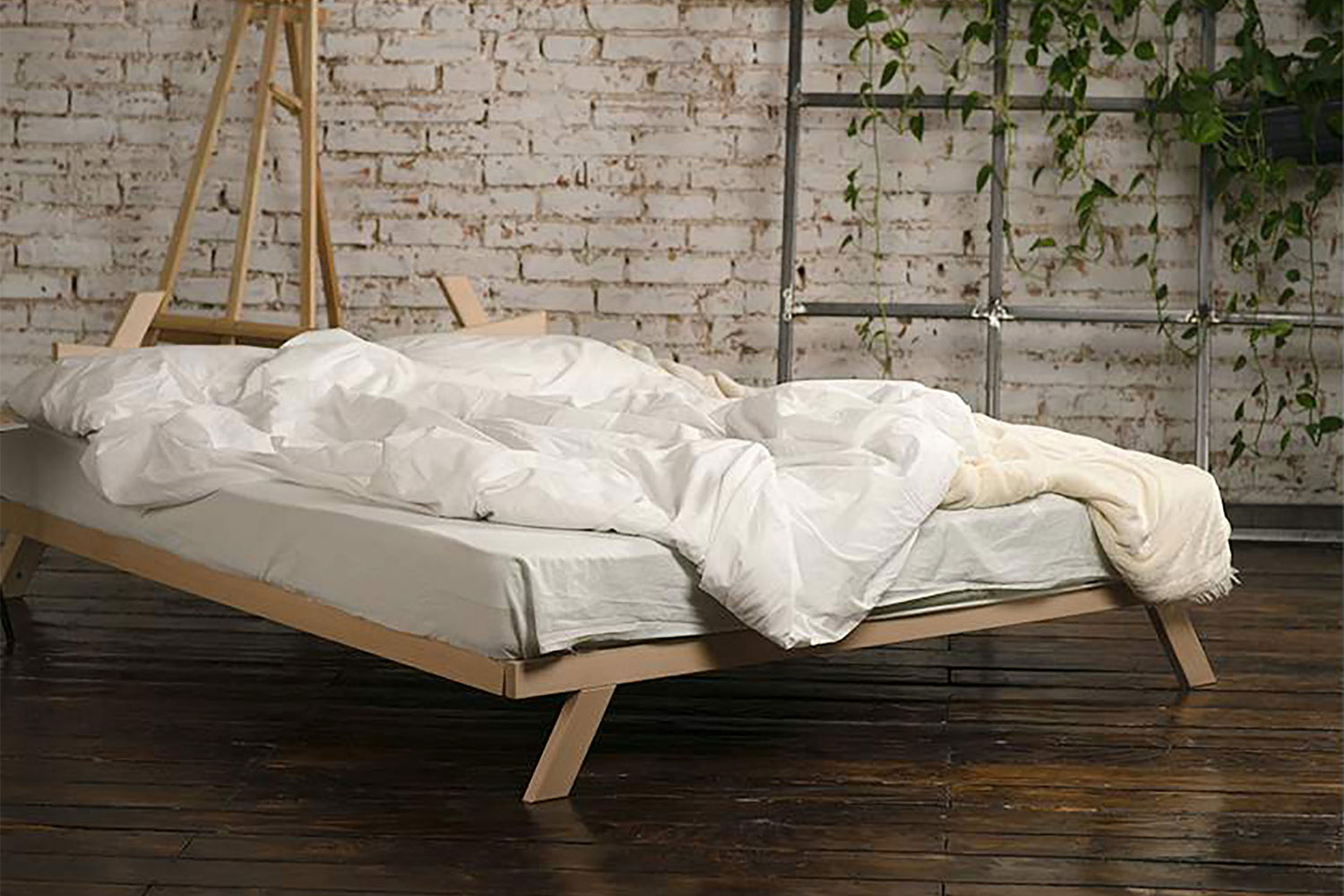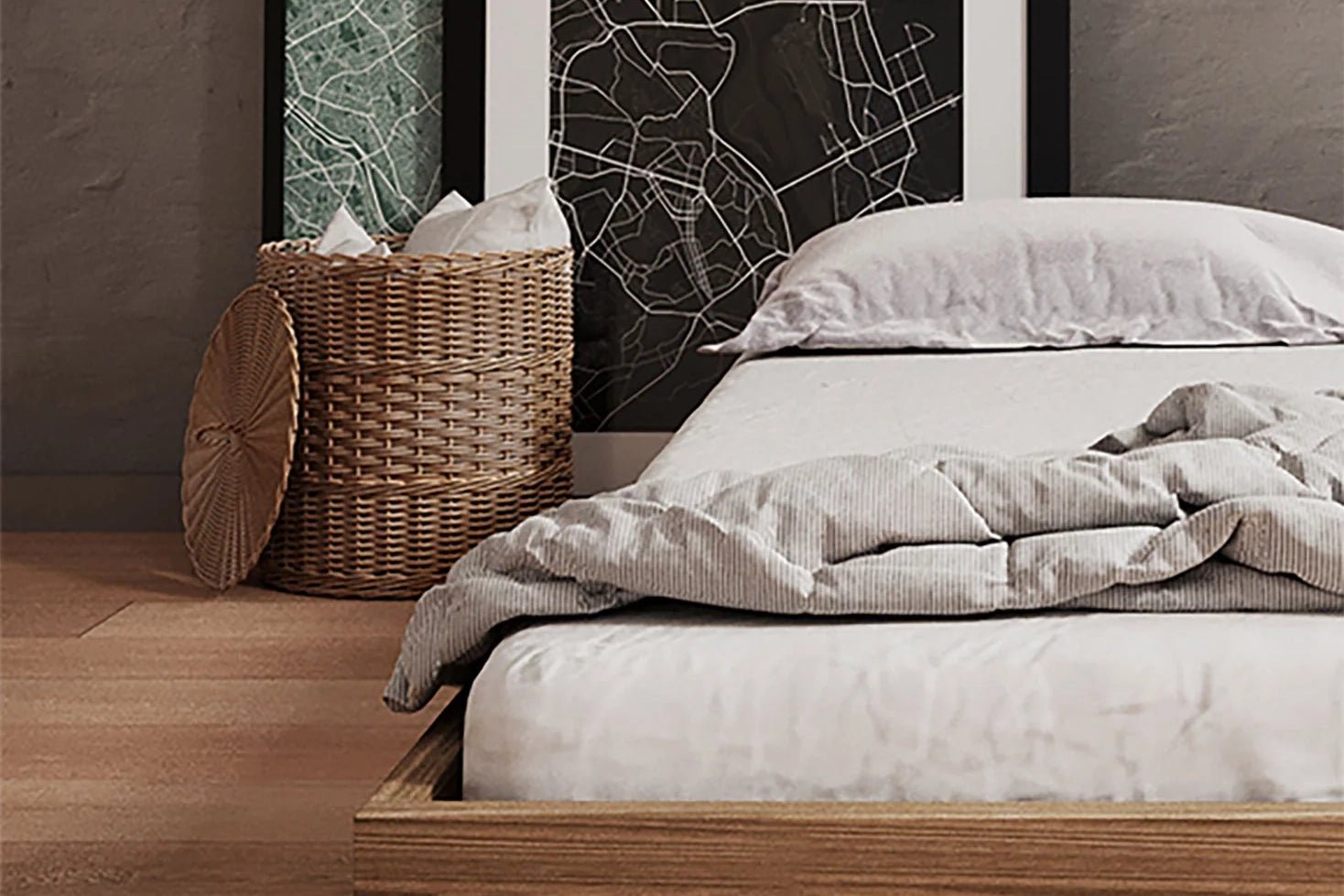
Tatami Mats & Shikibutons: The Timeless Elegance of Japanese-Inspired Sleep and Design
Share
When it comes to creating calm, minimalist, wellness-focused interiors, few styles are as iconic as traditional Japanese design. At the heart of this aesthetic are two essentials: tatami mats and shikibutons. Traditional tatami mats, made from natural fibers, have grounded Japanese homes for centuries—promoting simplicity, balance, and a closer connection to nature.
In this guide, we explore the elegance of tatami mats and shikibutons, the philosophy behind their use, and how an elevated option like a tatami bed can deliver modern convenience without sacrificing authenticity.
What Are Tatami Mats?
Traditional Japanese tatami mats are rectangular floor coverings crafted from compressed rice straw (or natural-fiber cores) wrapped in woven rush grass (igusa). Their gentle give underfoot, subtle natural scent, and breathable structure make them ideal for serene, grounded interiors. In Japanese washitsu (tatami rooms), they serve multiple purposes—sleeping, meditation, tea ceremony, or welcoming guests—embodying a way of living that values openness, flexibility, and calm.
The Natural Beauty of Tatami Mats
Tatami brings warmth, texture, and an organic, earth-toned palette that blends seamlessly with minimalist, Scandinavian, Japandi, or rustic interiors. The neutral look complements solid wood furniture and soft textiles, turning bedrooms, studios, or living rooms into peaceful retreats. For those seeking the look without traditional materials, tatami-style mats can echo the same aesthetic in modern settings.

The Comfort and Simplicity of Shikibutons
The shikibuton mattress completes the traditional Japanese sleep system. Unlike thick Western mattresses, shikibutons are lightweight, breathable, and flexible—designed to contour gently to the body while maintaining healthy spinal alignment. Placed directly on tatami, the combination of a tatami mat and shikibuton promotes airflow and temperature regulation, helping prevent overheating and moisture buildup.
Shikibutons also excel at practicality: they roll or fold for daytime storage, freeing up valuable floor space in small homes. If you want a deeper dive into materials, construction, and health benefits, see Shikibutons Explained.
The Philosophy Behind the Japanese Sleep System
- Ma — intentional empty space that calms the mind.
- Shizen — natural, breathable materials that age gracefully.
- Wabi-sabi — simple, enduring beauty over trend-driven design.
- Multifunction — rooms adapt for sleep, work, meditation, or guests.
For a step-by-step primer on building a traditional setup at home, read our guide to the Japanese sleep system.
Tatami Beds: Traditional Style Meets Modern Convenience
Prefer a raised surface? A tatami bed offers the perfect balance. These low-profile platform frames are built from solid wood and designed to hold tatami as a breathable bed rug or foundation. This setup improves ventilation, provides even support, and extends the life of your shikibuton or natural mattress. A tatami bed pairs beautifully with modern, minimalist, or Japanese-inspired interiors.

Tatami vs. Floor vs. Platform: Which Style Fits Your Life?
- Tatami + shikibuton on the floor: Most traditional, flexible, easy to store by day.
- Tatami bed + shikibuton: Elevated look with a breathable foundation.
- Tatami bed + natural futon mattress: Extra structure and comfort.
- Tri-fold or platform futon frame: Converts between sofa, lounger, and bed.
Tatami Alternatives for Modern Spaces
If you love the aesthetic but want a tatami mat alternative, several options achieve a similar look and function. Consider a wood-slat platform paired with a breathable mattress rug, coir pads, or natural-fiber floor mats. Each tatami alternative provides a grounded, calming feel with easier maintenance or added height—especially useful in high-traffic homes.
Bringing Japanese Elegance Into Your Home
You don’t need a full washitsu to enjoy the elegance of tatami. Even a single mat can create a meditation corner, reading nook, or a serene base under a daybed like the Long Beach Daybed Sleeper. For design ideas that integrate tatami into modern spaces, see Tatami Rooms and Japanese Minimalist Bedrooms, and for space-saving furniture pairings, read our note on maximizing space with twin futon frames.
Final Thoughts
The elegance of tatami mats and shikibutons goes beyond tradition—they reflect a lifestyle of simplicity, harmony, and mindful design. Whether you choose the classic combination of tatami and shikibuton or the elevated comfort of a tatami bed, these elements bring natural beauty and serenity to any home. By integrating tatami into modern spaces—through traditional mats, tatami beds, or tatami-style alternatives—you’re creating a calming environment where wellness, function, and timeless style come together.











